Going by the numbers, America is gaga about ballroom dancing. The nonprofit USA Dance, Inc., reports a 35 percent spike in the number of people taking lessons and attending ballroom events over the past 10 years. People of all ages are trying it out. Teens like the pace—the faster the better—and older folks point to research that shows dancing keeps the body agile and reduces chances of dementia.
Dancing is also just plain fun. “It’s the most joyful way for me to get my exercise, get my heart rate up, and get the endorphins I crave,” says actress Jennifer Grey, who has done as much for dancing as it has done for her. As costar of the 1987 hit film Dirty Dancing, she motivated millions to head for the ballroom. Last year she had a similar impact when she earned top honors on ABC’s Dancing with the Stars (DWTS) and proved, at age 50, that it’s never too late to strap on 4-inch heels and out-perform competitors 20 years her junior.
“Dancing takes me out of my busy monkey mind and dumps me in a physical space where I can be free from thinking,” says the actress. “It’s the best way for me to feel connected and alive. I take one dance class every week, but it’s not enough. I want to be able to do it every day.”
Although ballroom dancing has never lacked for fans, its soaring popularity has certainly been boosted by shows like DWTS and its FOX counterpart, So You Think You Can Dance. Statistics confirm that Americans are giving ballroom dancing another whirl.
“People are definitely getting off their sofas and starting to dance again,” emphasizes Carrie Ann Inaba, one of DWTS’s three professional judges. “During our first season on television people would come up to me on the street and say, ‘I watch the show every week.’ By the time the second season rolled around they were saying, ‘I’m talking my husband into getting into a dance class.’ Now they’re telling me, ‘We’re taking lessons and having a ball!’”
The least likely folks are taking up dance these days. Donna Thomas, 65, was raised in a conservative church and graduated from a college that frowned on anything that resembled what it categorized as “rhythmic activity.” Yet two years after becoming a widow, Donna summoned her courage, walked into a studio near her Springboro, Ohio, home, and announced, “I want to dance.”
It changed her life. “I needed to be with people,” she recalls. “I figured I had a choice: either withdraw and stay in my shell or step out and try something new.” The “something new” included mastering the waltz, samba, cha-cha-cha, and jive. Her timing—on the dance floor and off—was perfect. At home, she was learning to operate solo and make all the decisions that she and her husband used to make jointly. In the studio, she felt the pressure ease and the responsibility shift as she became part of a team again. “I didn’t have to be in charge,” she says. “All I had to do was follow my partner’s cues and react to the music. That lifted my spirits.”
People are also dancing in the least likely places. One of the most colorful offshoots of the trend is the “flash mob,” best described as a spontaneous outbreak of dancing in very public settings such as shopping malls, school cafeterias, hotel lobbies, food courts, and train stations.
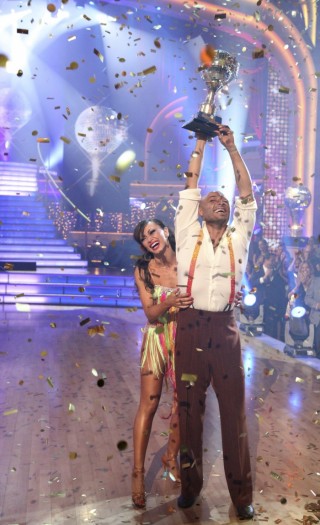
Participants, alerted to a planned flash mob through social media, congregate and wait for their cue. “People are just milling around when all of a sudden one or two start dancing,” explains Angela Prince, a spokesperson for USA Dance. Others join in and before long—in a flash, you might say—everyone’s toes are tapping, hips are swiveling, and bodies are gyrating. It’s as if one were in the center of a Broadway musical. “I remember being on a Caribbean cruise when a couple of passengers started a flash mob while we were eating dinner,” recalls Prince. “Everyone, including waiters and crew, caught the spirit and formed a conga line of about 300 people that snaked its way around the entire dining room.”
Although Prince agrees that shows such as DWTS have encouraged the ballroom craze, she credits other factors as well. “Dancing seems to experience a bump in popularity after events that change our lives,” she says, using the years following World War I and II, Vietnam, and 9/11 as examples. “Music is great therapy, and dancing gives people the opportunity to come together.”
Technology also may have a hand in the revival. Mary Murphy, a studio owner and frequent choreographer and judge on So You Think You Can Dance, says dancing provides a degree of human contact that is sorely missing since people have come to rely on the Internet as their primary mode of interaction. She works with elementary and middle school students to introduce them to what she calls the language of dance. “Some of the kids come kicking and screaming into the classes, but teachers tell me that they see positive changes within a few weeks.”
The idea of a young couple joining hands as the boy guides his partner and the girl follows his lead, is certainly part of the appeal. Dancing allows young people to communicate without the pressure of finding the right words. “Kids who have behavior problems naturally calm down and find new ways to express themselves,” says Murphy.
When it comes to the therapeutic benefits of dancing, Murphy can speak from first-hand experience. She underwent treatment for thyroid cancer a year ago and faced the possibility of losing her ability to talk. Today she is cancer-free and as exuberant as ever. She used dancing to help prepare for surgery, and she integrated it into her recuperation regimen. “Getting that diagnosis and hearing the word cancer was the one time in my life I just wanted to shut down and have a major pity party, which I did for a couple of days,” she admits. “Then I decided I absolutely had to keep my body moving. So I added a lot of activities to my pre-surgery program to increase my lung capacity. I did yoga, pilates, and dance exercises every day. I wanted to be in the healthiest condition possible.”
Her plan worked. She sailed through the operation and the recovery that followed. The reason? “I absolutely believe it was because of dance.”
Fans of the two hit TV dance shows can attest to similar dramatic effects that dancing has had on several of the competitors. “Kirstie Alley immediately comes to mind,” says Inaba. Dubbed “the incredible shrinking Kirstie” because of the weight she lost during Season 10 of DWTS, Alley decided to wear the same costume on the show’s finale as she wore for the initial competitive round. This proved to be a challenge for the wardrobe staff because the dress had to be downsized by 38 inches. The combination of a healthy diet and rigorous dancing had caused her to lose almost 100 pounds.
“A lot of times our self esteem is determined by the shape we’re in and how good we feel about ourselves,” says Inaba. “Dancing brings you back to a place where you feel physically confident about your body because you’re strong again. Your core muscles are working; you’re in shape; and you’re in tune with your body. I watched Kirstie rediscover her confidence last season.”
Dancing also can replenish a zest for life. Donna Thomas, the conservative-turned-dance-enthusiast, certainly discovered this when she was still newly widowed and stepped out of her comfort zone to sign up for ballroom lessons back in Ohio. Over a period of time, she became so engaged in dancing that she was a regular at Friday night dance parties, and her skill level rose to the point where her instructors encouraged her to enter competitions. Although she no longer competes, she still has the sassy black dress and high heels that she wore when performing, and somewhere there’s a scrapbook of photos, certificates, and ribbons. Her favorite memory, though, doesn’t involve winning prizes or gaining recognition. It’s more personal. “I remember the night I invited my kids to attend a dance with me,” she recalls, with a laugh. “You should have seen their faces! They were just so surprised at how good I was!”
Become a Saturday Evening Post member and enjoy unlimited access. Subscribe now
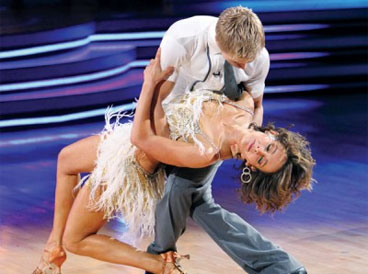
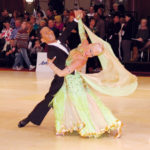
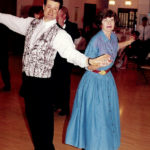
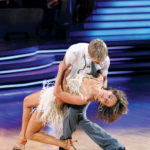
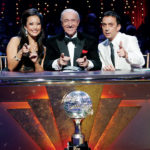
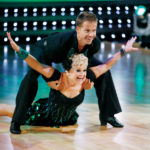
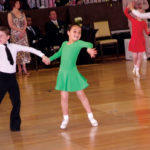
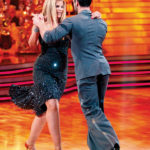
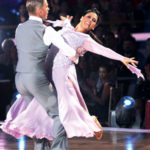
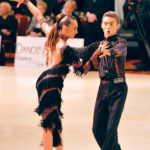


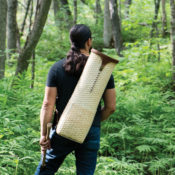

Comments
How can I get a copy of this October-November 2011 Saturday Evening Post?
Thanks
First, let me say that I found myself coming off the couch and dancing in my living room with all the enthusiasm a professional might have performing. DWTS hooked me week after week and I enjoy watching all that they achieved. This particular article is as inspirational in content and might lead more to get out and dance themselves; well-written. But I suggest a bit of exercise to prepare the body–possibly a seniors’ exercise class for someone over 50 who hasn’t been keeping active. For those young hopefuls, the challenge is the same. Thank you for such a good article.
Thank you for the great article!
Dancing make me healthier! It keeps my mobility in good condition after 2 surgeries. It became a big part of my life ever since that monthly dance at USA Dance, Orlando, Fl in 2006. It’s fun and addictive. It’s hard to quit once you start dancing! Try it!
It is a proven fact that ballroom dancing is healthy for you. I am a member of USA Dance and enjoy ‘promoting’ the love of ballroom dancing every day. We participate with the community to share our love of ballroom dancing by bringing classes to the young and old in our Ft. Myers, Florida areas.
To see the article only proves that “yes we are doing a good job”. Course the new dance shows on tv do help!!!
Thank you Saturday Evening Post for your marvelous article!!!
Great article!! Thank you!
I started dancing in 2007 after losing my father and going through a bad marriage. I had an epiphany to go sign up for lessons. To this day I love dancing at the age of 61.. it keeps me in good shape, mentally and physically. I have a “dance family.”
I thoroughly enjoyed working with Saturday Evening Post on this article. What a fabulous cover – what we would expect from this American icon. I’d like to say that this article is one of the best written, factually and stylistically, about ballroom dancing and what’s happening in our country. On behalf of our organization’s 174 social dance chapters around the country and all of our dancesport competitors, from pre-teen to seniors, we thank you for this wonderful portrayal of America’s growing love for dance and its impact on our lives!.
Thanks for letting us know, Yang Chen. We’ve corrected the photo caption.
I have tap danced since 5th grade but after 40 years of not tapping, I joined a Sr. group. We learned dances and danced for nursing homes, etc .. There were a group of 10 of us but as the years went on, many had knee replacements, broken hips, and finally I had to have 2 hips replaced last year. It is a wonderful way to exercise and keep in shape and I am 78yrs old and want to get back to it as soon as possible. The Dr. said I should be able to tap again if I dont cross my legs too far!!
You have a wonderful magazine and I’m glad I found it. Surprised it was still in existence and in Indianapolis, Indiana. I’m from South Bend, Indiana.
Great Article ! I am a member of USA Dance, Memphis Tn. and am on the Board of Dir….Been dancing now for 10 years…started when I was 66 and am now 76. Just performed a Standard, Fox Trot showcase with my instructor, had the dress for 4 years, fortunately I was not burried in it. Dancing, Volunteering to promote Ballroom Dancing is a blessing. Some of us were dancing before it became America’s Pastime Again. Hooray for USA Dance, A TRUE NON PROFIT ORGANIZATION !
Wonderful article. Please note that the photo for Xingmin and Katerina Lu does not match the caption; it looks like the photo and caption for Donna Thomas got mixed up with the ones for Xingmin and Katerina.